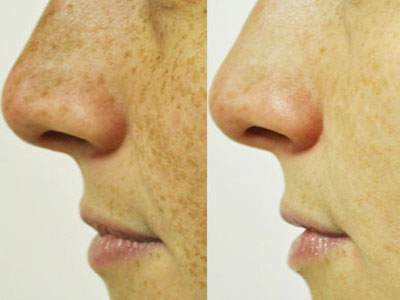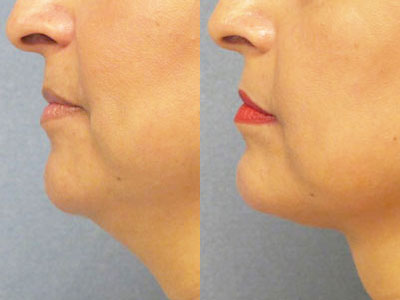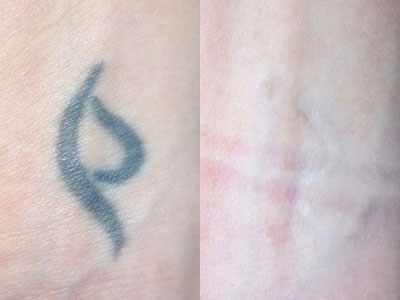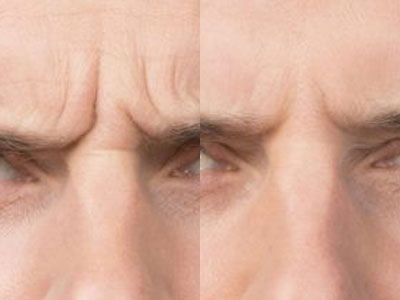The thousands of selfie attempts stored in your phone’s photos have made you painfully aware that time has not been kind.
Staring into the mirror illicit feelings of insecurity, and you dare not ask if you’re the fairest in the land.
You’ve exhausted your attempts at Youtube tutorials to make yourself look youthful and vibrant.
You’re ready to take drastic measures to find your fountain of youth.
- You don’t have to spend hours searching for make-up tutorials.
- You don’t need to waste money on gadgets to glue or tape behind your ear.
- You don’t need to spend a lifetime searching Pinterest for a “natural” remedy for lines and wrinkles.
You only need to schedule your first Botox consultation.
In this article, we will explain what Botox is, how long it takes to work, and why.
What Is Botox And How Does It Work?
Botox is a drug used to bind muscle nerve endings and as a result, paralyzes or weakens the muscle.
When used to treat facial lines and wrinkles, it is injected just underneath the skin and prevents your facial muscles from contracting as they normally would when we smile, laugh, frown, and cry.
What is Botox?
Botox is used by doctors to treat specific muscular conditions. It has recently been adapted and used cosmetically to remove facial lines and wrinkles that you develop as you age.
The scientific name for Botox is Botulinum toxin. It is a neurotoxin produced by the bacterium Clostridium botulinum.
It has been approved for the treatment of multiple medical conditions such as:
- Excessive sweating
- Migraines
- Muscular disorders
- Neck spasms
- Facial lines and wrinkles
It’s important to note that there are different types of Botox injections that can be used.
In 2002 it was approved by the FDA to be utilized in cosmetic procedures to temporarily reduce forehead and frown lines.
How Does Botox Work Exactly?
Botox injections are used to temporarily prevent a muscle from moving.
Your doctor will use a very thin needle to inject small amounts of the toxin under your skin and into your muscles. Botox is capable of causing muscle paralysis by blocking muscle nerve neurotransmitters
It relaxes the muscle so that it becomes flaccid and immobile, and as a result, the overlying skin is smoothed.
How Long Does Botox Take To Work?
Most of the published information we see on Botox refers to its efficacy.There is rarely any documentation of the rapidity of its onset.
Typically patients see improvement in about two to four days.
Maximum results can be seen in as little as a week after treatment.It can vary from person to person and relies heavily on the following factors:
- Your age
- Your muscle mass
- Your gender
- The volume of your injection
- They type of Botox used
- The elasticity of your skin
How Long Does It Take Botox To Start Working?
Botox injections usually start working one to three days after treatment. It can depend on a variety of things:
- The area being treated
- The volume of the injection
- Your physical activity after treatment
The following science-based article explains more about how long it takes Botox to start working:
Clinical Interventions in Aging
This article finds that when Botox is used as a treatment for lines wrinkles, that onset of efficacy is typically rapid.
“The percentage of responders at maximum frown 2–4 days after treatment was 95.2% and 85.0% when responders were defined as patients with ≥1-point and ≥2-point improvement on the 5-point scale compared with baseline, respectively. At this time point, 84% of the maximum effect had occurred.
The responder rate at maximum frown, according to both definitions, was 100% for at least the next two visits (days 8 ± 1 and 14 ± 2). At all visits, the change from baseline in the mean glabellar frown-line score at maximum frown was statistically significant, with on average an almost 1-point improvement from baseline 5 months after treatment.”
How Long Does It Take Botox To Fully Work?
Maximum results from Botox treatment is not immediate. It does take some time to fully work.
It may, however, comfort you to know that your Botox will arrive in about the same time as your Amazon order if you order on Friday and live in an area with no Sunday delivery.
You will start to see results in about three to five days. You will begin to see maximum results in as little as one week.
Again, this depends on a variety of factors and varies from person to person. The following science-based article explains more about how long it takes Botox to fully work:
Archives of Craniofacial Surgery
This article found that typically patients who used Botox to treat forehead lines and wrinkles were able to see maximum results in just two days.
“Improvement in glabellar frown lines at maximum frown was observed in 85.4% of subjects 2 days after administration. Improvement in glabellar lines at rest was observed in 51.2% of subjects 2 days after administration, and the proportion of subjects showing improvement increased with time. No severe adverse events were recorded.”
“Onset of action was observed in the majority of subjects by 2 days after administration of Nabota. In addition, Nabota was found to be safe and effective for the treatment of glabellar frown lines.”
What You’re Asking Is… “How Long Does Botox Take To Show Results?
When injected properly by a medical doctor, you can expect to see results after your first treatment. It can take two to four days before the weakening of the muscle begins and movement is stalled.
You can see the maximum results of your treatment anywhere from ten to fourteen days after treatment. The best part is that maximum results can be seen up to three months after your treatment.
Why Does It Take Botox Time To Work?
Botox takes time to work because it must reach the cellular level of the muscle in order to block the neurotransmitters in the nerve, eventually causing the paralyzation of the muscle.
There are a couple of reasons that this timing varies from patient to patient:
- Area of treatment
- Muscle thickness
- The volume of Botox used
The following science-based article explains more about why it takes Botox to work:
Toxicon
This article explains the timing of the effect of Botox injections.
It details the route the toxin must take from needle to the cellular level of muscle, finally causing muscle paralysis.
“After toxin is injected into a muscle, it resides in the extracellular space and must be taken up into the nerve terminals. More toxin will be taken up if near the endplate. Toxin is distributed mainly by convection and there is likely little diffusion. Toxin that is not taken up will go into the general circulation where it may have a slight systemic effect.
The uptake is activity and temperature dependent. Encouraging the unwanted muscle contractions after injection should be helpful. Cooling will decrease the uptake. The times for washout from the extracellular space and uptake of the toxin are not well established, but are likely measured in minutes. Toxin in the general circulation has a long half time.
The time from injection to weakness is determined by how long it takes to get sufficient damage of the SNARE proteins to interfere with synaptic release.”
Journal of the Neurological Sciences
This study provides us with more in-depth knowledge of the timing of the efficacy of Botox injections.
It also further examines a few of the variables that can cause the timing of the full effect of Botox treatments to vary from person to person.
It explains the process of using MRI technology to map the flow of Botox from injection to the cellular level of the muscle.
“A precise knowledge of the spread of botulinum toxin (BoNT) in muscle tissue is required to efficiently access endplate zones and increase BoNT’s therapeutic efficacy. Here, we aimed to understand the spatiotemporal dynamics of BoNT distribution in skeletal muscle and its modulating factors, such as injected volume and exercise after injection.
To visualize distribution in muscle tissue, sagittal, dynamic, balanced fast field echo (BFFE) MRI imaging was performed during injection of 1 ml BoNT/NaCl bolus in spastic biceps brachii muscles (SBB, n = 4), and 1 ml NaCl in the right and 2 ml NaCl in the left healthy biceps brachii (HBB, n = 6), with or without successive muscle exercise. The pattern of extracellular fluid distribution was evaluated by T2-weighted and diffusion tensor imaging (DTI) sequences.
Injecting BoNT at different depths perpendicular to the direction of the muscle fiber might optimize the efficacy of BoNT treatment. Additional sites along muscle fibers should be considered in SBB.”






